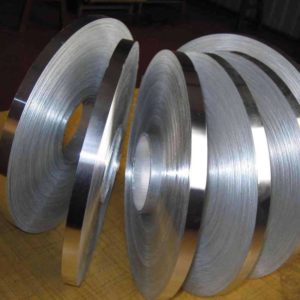Exact knowledge of the surface roughness and thickness of the oil layer provides pressing plants in the automotive industry with enormous potential in terms of reducing their waste and enhancing process reliability before continuing to process aluminium strip or plate material. The oil layer measurement, however, has specific requirements. The trend is towards higher strength material with thinner oil layers, which, overall, means enhanced requirements for the pressing process in terms of accuracy. Due to the close relationship between the oil layer and material roughness, as well as the significant influence they have on the forming process, e.g. for the automobile manufacturer, accurate monitoring and control of both factors during production of the strip will provide the aluminium manufacturer with an important competitive advantage.

Standard measuring methods that are used in the production of aluminium strip material are based on the use of handheld devices. The accuracy of this approach is extremely limited and prone to errors, particularly due to the low statistical significance of the individual measurement (point measurement) and the human factor. These limitations are overcome with the introduction of the EMG SORM3plus and EMG SOLID® online measuring systems, which are also suitable for the aluminium production process. EMG SORM3plus is a laser-based online roughness measuring system, which delivers online values for Ra and Rpc in a quasi-continuous manner at production speeds of up to 2400 m/min.
The EMG SOLID® system, which is based on infrared spectroscopy and used for continuous online measurement of the oil layer, is suitable for use on uncoated and pre-treated aluminium strip material and can be used for a wide variety of lubricants (mineral oils, thixotropic mineral oils, dry-film lubricants/dry lubes).
In addition to providing online measurement data and enabling the operator to intervene immediately in the process to prevent variations in quality and complaints, both systems also provide valuable historical data that can be used for trend analysis, statistical process optimisation and the verification of process models.
By combining these systems, the aluminium manufacturer is able to generate data consistently throughout the process chain, thereby enabling the production of individual plate material to be replicated exactly in the downstream processes. The data cannot only be used for subsequent error analysis, but it can also be used in the future for targeted control of presses and post oiling systems in the pressing plant. This is, at the very least, potential that can be derived from the industry-wide activities conducted in the context of the Industry 4.0 paradigm.
